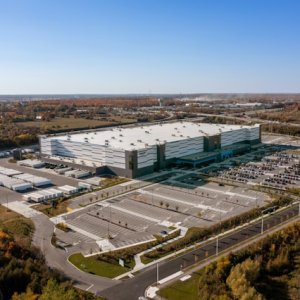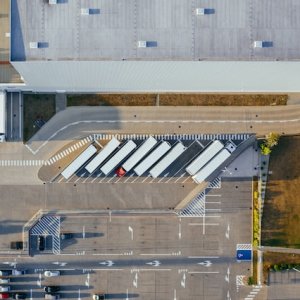Added Value in Nuevo Leon Customs Offering

STORY INLINE POST
A developed supplier base, skilled labor, as well as road, railroad and airport connectivity are among the advantages that make Nuevo Leon an attractive region for possible automotive investors. Add in price-competitive utilities, logistics advantages and trade-oriented amenities and you have a bulletproof investment-attraction strategy, according to Mauricio Garza, CEO of Interpuerto Monterrey.
“Adding extra advantages such as a customs office, a Free-Trade Zone (FTZ) and competitive utilities have been key in marketing spaces at Interpuerto Monterrey,” says Garza. All automotive companies demand amenities like fiber optic, water, electricity and sometimes natural gas, but Interpuerto Monterrey has gone one step further to offer amenities the market wants to boost efficiency and cut costs. “We have industrial plots ready for automotive companies so they need only focus on producing when they arrive,” says Garza.
Located in the heart of one of Mexico’s key automotive regions, Interpuerto Monterrey is a 1,400ha industrial park in Nuevo Leon. It caters to businesses that supply both the US market and automotive companies located in Central Mexico. Although Interpuerto Monterrey works with tenants from various industries, automotive dominates the park’s operations with 65 percent of its business related to this market.
The park has worked extensively to improve its offering for automotive companies and a customs office will open at Interpuerto’s facilities in August 2018. “The idea is that all of our clients’ imports and exports will be processed through this office,” says Garza. The project will reduce companies’ costs and processing times since products will no longer stop at the Mexican border for processing. “Pre-validation processes will also be carried out within the park so Mexican authorities do not stop goods for revision prior to crossing the border,” says Garza. “In the future, Interpuerto Monterrey seeks to have a bi-national customs system that operates between Mexican and US authorities. “US customs agents will be able to release goods prior to leaving the park and they will not suffer delays at border crossings,” says Garza.
In terms of utilities, Interpuerto already has an operating electrical substation and is contemplating a cogeneration project to supply its clients with cheaper, cleaner and more reliable energy, as well as steam if necessary. “A natural gas pipeline is planned to cross Interpuerto Monterrey, which will provide this resource at a price that is 20 percent cheaper than the average market price,” says Garza.
The park has also reached several milestones in its logistics development plan. Located directly next to KCSM’s railroad container terminal and several highways, Interpuerto Monterrey offers both railroad and road transportation capabilities. “Trains are the most efficient transportation means in distances over 700km,” says Garza. “For shorter distances, it makes more sense to employ trucks.” Offering both transportation means adds to Interpuerto Monterrey’s attractiveness for companies interested in both exporting and serving the domestic market.
Up to 85 percent of Mexico’s cargo is transported using trucks, so Interpuerto Monterrey invites clients to take advantage of railroad transportation when convenient. “Companies that ship few containers use mostly trucks, due to the fact that in most cases the frequency and delivery time of the train does not meet these needs,” he says. “The challenge is finding ways to implement small-volume trains to help companies efficiently transport their goods over long distances so they can benefit from the price advantages that rail transportation offers over those distances.”
Garza says that although 2018 has been a challenging year for Interpuerto Monterrey because of the impact from NAFTA renegotiations, domestic elections and the US tax reform, the park expects to sell 30ha and lease a few industrial warehouses in 2018. “We have around 350ha under negotiation but companies are waiting to see what happens with the new Mexican President and the new USMCA prior to moving on,” he says.
























